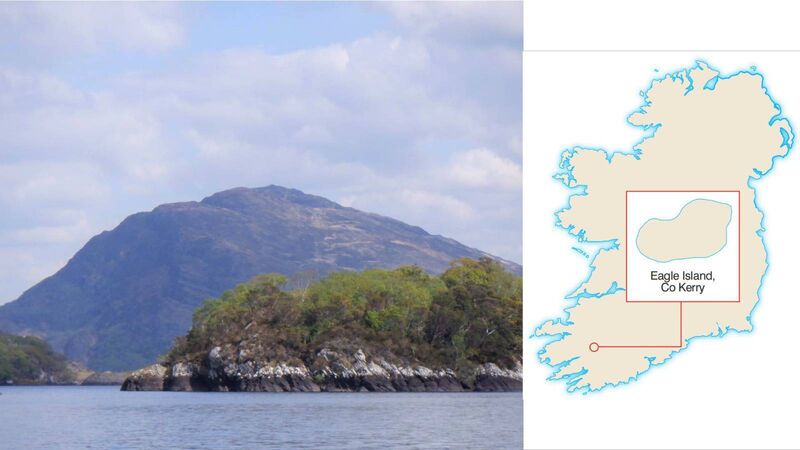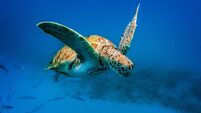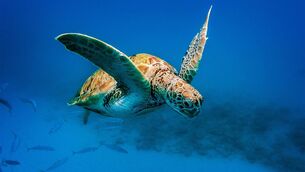Islands of Ireland: Eagle Island, where eagles once flourished

Eagle Island, Upper Lake, Killarney, County Kerry. Picture: Dan MacCarthy
Killarney’s Upper Lake is a mere sliver compared to the comparatively large Lough Leane and only half the size of the second of the lakes, Muckross.
However, it is still packed with islands with enticing names. The trio of lakes collectively form an interconnected system of spectacular lakes which have attracted tourists for centuries.
All the islands are heavily wooded with examples of ancient woodland species including Ireland’s native evergreens, yew, arbutus and Scot’s pine. Though no community ever lived on any island in the Upper Lake, at least two have attracted eccentric inhabitants who called them home for a time and who somehow managed to exist there by themselves.
Ronayne’s Island was inhabited for a time in the mid-18th century by the eponymous Philip Ronayne who was a distinguished mathematician and was said to have had the acquaintance of Isaac Newton.
A 19th-century account alludes to the fact of people living on Eagle Island but has probably confused Ronayne with Eagle’s Island when it wrote: “Passing Eagle Island, the visitor is surprised at a solitary cottage on one of these little water-girt islands, more lofty than the rest. It was built by Mr Ronan, a gentleman of independent fortune, who usually spent two or three months in each year in this secluded spot, shooting and fishing.” It seems highly unlikely that there was a Mr Ronayne on Ronayne’s Island and a Mr Ronan on Eagle Island. More likely that they were the same person. Still, it was possible for all of the above islands to have a rudimentary hut which would protect someone from the elements in the summer.
Where some of the islands on the lake were named in people’s honour (McCarthy’s Island, Robinson’s Island) granted by the man charged with naming them (a Fr Murphy in the 19th century) some were named for flora and fauna (Juniper Island, Duck Island). Eagle island lies among a cluster of these islands at the western end of the Upper Lake.
Eagle Island was named at a time when these magnificent apex predators soared above the expanse of the lakes or into the mountains before nesting in the woods. Eagle Island must have been a popular location for them being far from the madding crowd. Happily — though much fewer in number — the eagles are back, and on a separate kayak trip to the nearby Cloonaghlin Lough two magnificent specimens could be seen circling the small island of Illauneina. But more of that anon.
There is a second Eagle’s Island off Erris Head in County Mayo where the eagles also once flourished and which were observed by this columnist on a recent trip just south of Achill Island. And there is a third in Connemara.
The presence of the eagles in the vicinity of the lakes was attested to by a hunting party in 1830, with one of them stating: “Four or five large eagles of a brown colour, startled by the shots, rose from the mountain and sailed upwards in slow circles. You will easily conceive with what interest we watched the monarchs of the air.”
Another report from 1855 demonstrated the popularity of the lakes with English visitors: “The lakes, with their beautiful winding river of communication are enclosed by noble hills clothed to the water’s edge with luxuriant foliage above which are seen, rising to the clouds, the broken craggy peak and darkly frowning cliff in whose fronts the eagles build their unapproachable dwellings.”
White-tailed Eagles were absent in the wild in Ireland in the 20th century having been hunted and poisoned till the native population vanished. They were reintroduced in Killarney National Park in 2007 and can now also be found in Cork, Clare, Tipperary, and Galway. And a report just last month stated that the National Parks and Wildlife Service had observed that white-tailed sea eagles are back nesting at the lakes at the Old Oak Woods.
: While permits are available to kayak on the lake, landing on the islands is discouraged owing to the very sensitive habitats there. gapofdunloetraditionalboattours.com/boat-tours
Permits available from killarneynationalpark.ie
: Freeman’s Journal, 29/09/1830; Heywood Advertiser 15/09/1855







